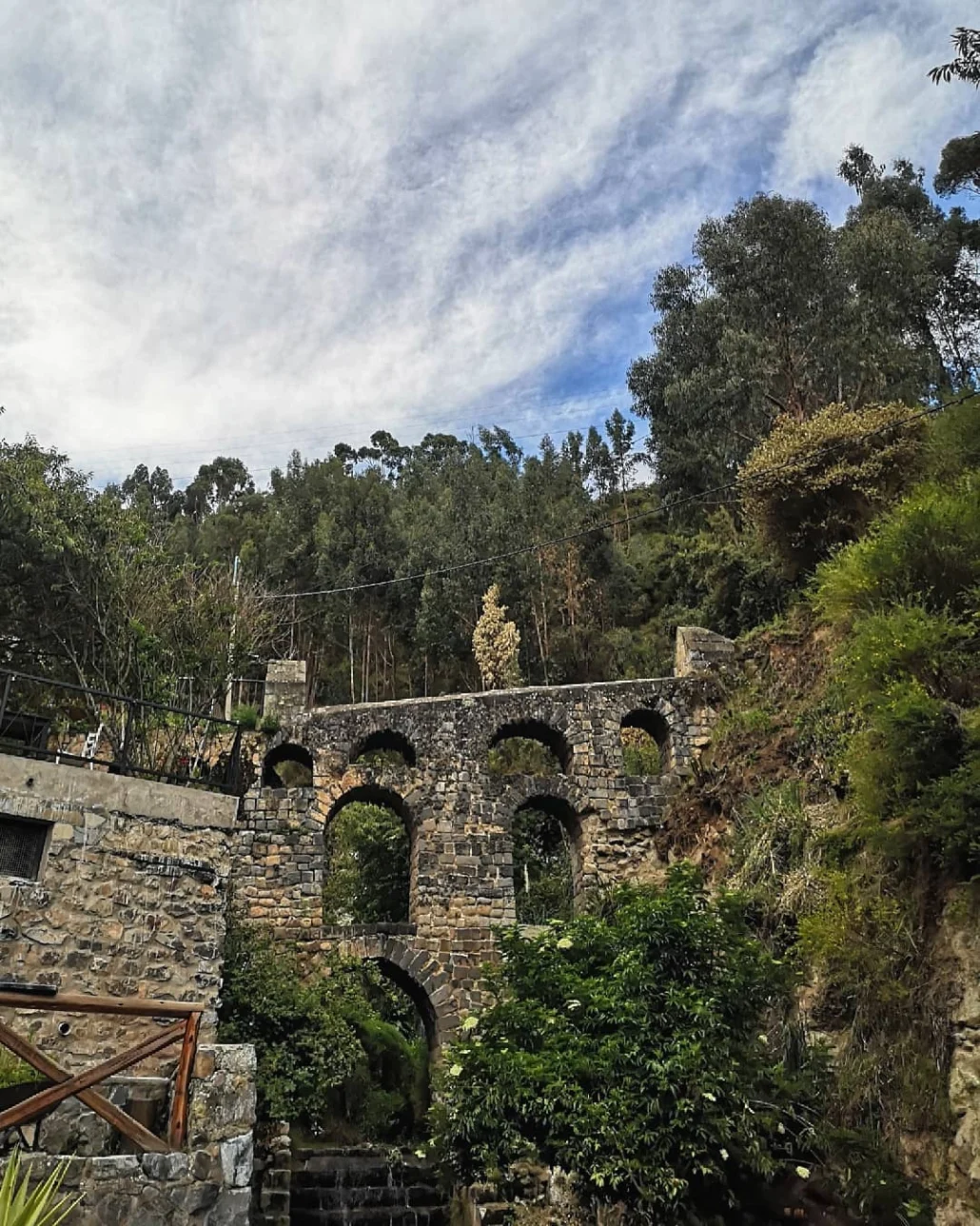Imagine walking among stone arches from the Spanish colonial era, with waters that connected the city to the sacred mountains, built in the 18th century. The Sapantiana Colonial Aqueduct was more than just an engineering feat; as you explore this magical place, you’ll feel the fusion of two worlds, Inca and Spanish, in a single landscape.
Visiting Sapantiana is like walking through legends, connecting with the past with every step. It’s an ideal destination for lovers of history and culture.

@ericktravel.pe
What Is the Sapantiana Aqueduct?
The Sapantiana Aqueduct is a colonial structure located in the picturesque San Blas neighborhood in Cusco. It features a system of stone channels designed to supply water to the city during the colonial period.
What makes it special is its architecture, which combines pre-Hispanic techniques with Spanish influences. Seeing its arches and bridges, it’s easy to imagine the importance it held for the inhabitants of that era.
History of the Sapantiana Aqueduct
The Sapantiana Aqueduct traces its roots back to the colonial era, when the Spanish recognized the need to channel water to improve the quality of life in Cusco. This hydraulic system was a practical solution to transport water from the mountains to the city, taking advantage of the natural topography of the terrain.
Over the years, the aqueduct has become a silent witness to the passage of time, enduring the challenges of weather and urban growth. Today, it stands as a symbol of the ingenuity and skill of colonial builders, remaining a lesser-known tourist attraction.
Features of the Sapantiana Colonial Aqueduct
The Sapantiana Aqueduct is characterized by its stone arches, notable for their solidity and beauty. The use of carved stone showcases the skill of colonial builders in integrating Inca techniques with European designs.
It features multiple levels of channels, allowing water to flow from the heights to the city of Cusco, adding a natural touch to its already impressive presence. Its structure remains almost intact, making it a special place for those seeking a connection to the past.
Architecture and Design of the Aqueduct
The architecture of the Sapantiana Aqueduct combines colonial influence with elements of Inca engineering. Its stone arches are arranged on different levels, utilizing the natural slope of the terrain to channel water.
Each stone was carefully placed to withstand the weight and pressure of the water. Its design is simple yet efficient, and its rustic yet elegant aesthetics make it stand out among the colonial constructions of Cusco, serving as an example of the fusion of two cultures.
How to Get to the Sapantiana Aqueduct in Cusco
Getting to the Sapantiana Aqueduct is simple. It’s about a 15-minute walk from the Plaza de Armas. Head towards San Blas, then take a street leading to Siete Angelitos Street and continue to the end of the slope.
The route is short, approximately 20 minutes on foot, taking you through cobblestone paths before reaching this impressive colonial site.
Transportation Options to Visit the Aqueduct
There are two transportation options:
- Walking to the aqueduct, passing through Siete Borreguitos Street.
- Taking a taxi that drops you off at the lower part of Siete Borreguitos Street, from where you’ll walk a few minutes to reach the aqueduct.
Recommended Routes from Downtown Cusco
A recommended route to reach the Sapantiana Aqueduct is to start from the Plaza de Armas and walk toward the San Blas neighborhood. From there, follow Tandapata Street, which will take you through colonial houses and cobblestone streets until you reach the upper part.
Another option is to take the San Blas slope, which is slightly steeper but offers beautiful views of the city. Both routes allow you to enjoy the bohemian neighborhood before arriving at the peaceful aqueduct, where history and nature come together in perfect harmony.
Best Time to Visit the Sapantiana Aqueduct
The best time to visit is during the dry season, as it allows you to enjoy the sites more fully.
Recommended Seasons
The best time to visit the Sapantiana Aqueduct is between May and October, during the dry season in Cusco. During these months, the weather is ideal for walking and enjoying the surroundings without worrying about rain.
If you decide to go during the rainy season, between November and April, the landscape becomes greener, but the hikes can be more challenging due to wet trails. Additionally, the aqueduct may carry more water, which could make the visit more difficult.
Location
The Sapantiana Aqueduct is located in the traditional San Blas neighborhood, about a 15-minute walk from the Plaza de Armas in Cusco. It is situated at the end of Tandapata Street, one of the highest points in San Blas, offering a panoramic view of the city and its surroundings.
This historical spot is easy to access and is an ideal destination for those looking for something different in Cusco.